When I first came across this image in the July 25, 1963 issue of the Northside Reporter (Jackson, MS), I thought it was the interchange on the southeast side of downtown Jackson, popularly known as “The Stack,” but then when I read the caption, I realized it was up north “near the North State Street-New Highway 51 intersection.” Is this interchange what is now the connection between 1-220 and I-55? Or does it no longer exist? Anyone out there know/remember enough Jackson interstate history to enlighten us?
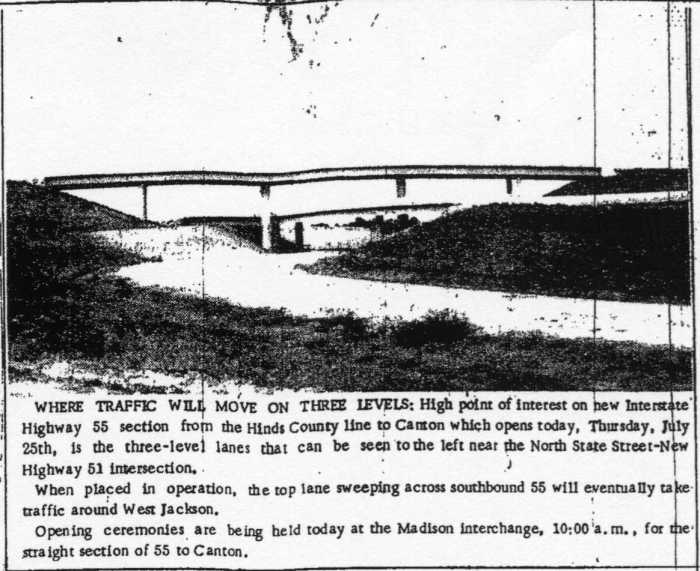
Northside Reporter, July 25, 1963, p. 2
Is this the same interchange?
Other Mississippi highways . . .


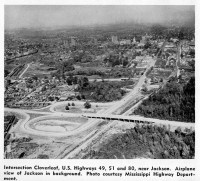
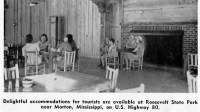
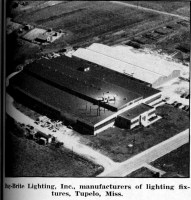
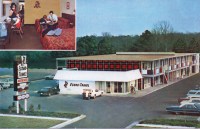
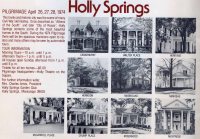

It is near Northpark.
LikeLike
I think that I remember what happened. They built the new overpass before the interstate was completed, so it sat there unused for years. When the time came to utilize it, it was insufficient and no longer met requirements so it was destroyed and rebuilt and that is what you see today. My memory may be faulty because I was just a kid, but that is how I remember the situation. The location is South of the Natchez Trace exits of I-55.
LikeLiked by 1 person
I think you’ve got it. I’m surprised that would have been built so early; seems like twenty years later would have been more likely
LikeLike
In my best Arnold Horschack (look it up) imitation: Ooooh! Oooooh! Ooooh! I know this one! The bridge in the picture no longer exists. Per the article, it was built along with that section of I-55 from the Hinds County line to Canton, but never used. It was the proverbial bridge to nowhere. The article implies that it was intended to be the crossover to I-220 going to west Jackson, which didn’t happen for another 15 years or so. When 220 was constructed, that bridge was determined to be unsuitable for reasons I can’t remember, and was subsequently torn down and replaced with the current one. Quite the boondoggle at the time. There was much talk about why back then, but that’s been 40+ years now and I don’t remember.Wish I had time to look it up, but don’t at the moment.
LikeLiked by 4 people
Old pre-220 aerial shots of that interchange show I-55 northbound sweeping out to the right (east) as it approaches the future 220, then realigning with the southbound lanes up near the Natchez Trace. It appears that the original plan was for 220 to be a LEFT exit off of 55 northbound, using that bridge in your picture. When 220 was finally completed, it was apparently determined that a RIGHT exit would be better, so the northbound lanes were moved to the west to accommodate the exit and the larger bridge we know today.
LikeLiked by 1 person
1971 Aerial:
https://www.historicaerials.com/location/32.412782292660395/-90.14909863471985/1971/17
vs
1996 Aerial:
https://www.historicaerials.com/location/32.412782292660395/-90.14909863471985/1996/17
LikeLiked by 1 person
Aha! That also explains the little job in the interstate that I’ve always found puzzling, and in the aerials, you can see the straight line that used to be the northbound lanes. I knew all I had to do was ask the MissPres universe and I should receive a cogent and learned answer!
LikeLiked by 1 person
C-L article about the old and new bridges (two parts, so two links):
https://www.newspapers.com/clip/6894267/i220i55_interchange_redesigned/
https://www.newspapers.com/clip/6894273/i220i55_interchange_redesigned/
LikeLike
How interesting! I just remember in the early 1960’s my Mother proclaiming that Jackson was going to be ruined by the new freeway as it would divert traffic away from Jackson. Or so she thought then.
LikeLike
The original interchange ramp was to exit to the left which was common at the time. The original embankment was constructed out of yazoo clay soils and by the time I-220 was to be constructed the embankment had suffered numerous land slides some of which had moved the bridge abutment on the east end of the bridge. Also when they were ready to begin construction the standards for Interstate exits had changed to where they did not allow left exits.
This was based on the idea that you travel hundreds of miles in a rural area with all exits being on the right and suddenly in the city your in the wrong lane to move to another interstate route. So these two problems caused them to build a new connecting bridge with the specifications that were in force at that time.
LikeLiked by 1 person
This was based on the idea that you travel hundreds of miles in a rural area with all exits being on the right and suddenly in the city your in the wrong lane to move to another interstate route.
Imagine the shock that this country boy had, towing a trailer through Atlanta and trying to get to Cartersville, Georgia. Oh the humanity with all the blowing of horns and middle-fingers. But it was all worth it to see a beautiful city that Sherman didn’t burn. General Forrest is know as the Savior of Rome; I don’t know that he played a part in keeping Sherman from burning Cartersville.
LikeLike